The Nominated Film You May Have Missed: THE EXORCIST
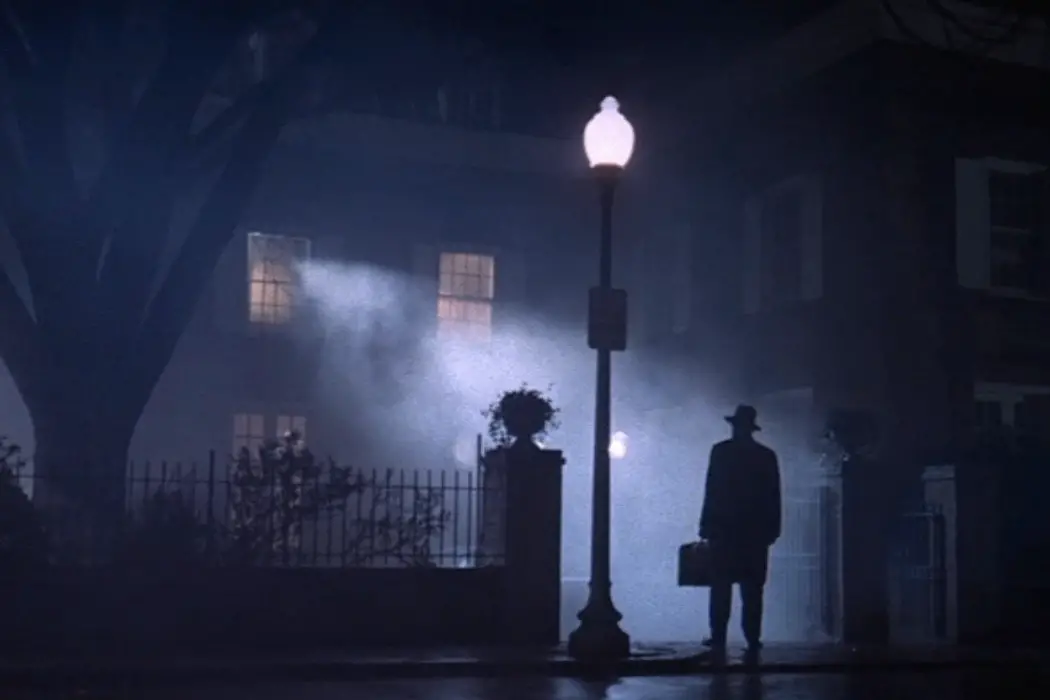
Stephanie Archer is 39 year old film fanatic living in…
Every year, between five to ten movies are bestowed the honor of being nominated by the Academy of Arts and Sciences. Many will have already enjoyed various successes throughout the year – good festival attendance, box office success and the reception of other prestigious awards. Yet, only one of them ends their evening declared the best of the best.
Each month, I select one such film that while honored with a nomination, did not achieve the highest recognition – a film for your consideration. Bringing these films back into the spotlight and into the minds of viewers gives them the chance to shine once again and reach a new group of people who may never have considered them previously. This month, I found inspiration in the up-and-coming Halloween season, reaching deep into the history of nominations to find a film that matched the hype and hysteria of this annual ghoulish holiday. Claiming the title of first horror film recognized by the Academy, and just recently dethroned in profitability by the remake of Stephen Kings’s It, The Exorcist became this month’s perfect selection.
While watching The Exorcist with my fianceé, a first for both of us, one of the most commonly uttered phrases was “This was made in the ’70s?” The depth in character, the graphic imagery and the top notch filmmaking supersedes horror films made in the present, making it horrifying, captivating, and most importantly, timeless.
The Exorcist
Opening on an archaeological dig site, The Exorcist immediately eludes to a dark evil to come, as a small amulet resembling the demon Pazuzu is uncovered. Its discovery causes a well-known priest, who once performed exorcisms, to flee the area and return to his homeland. His fear and solitary behavior sets the demonic tone of the film, and foreshadows the evil to come.
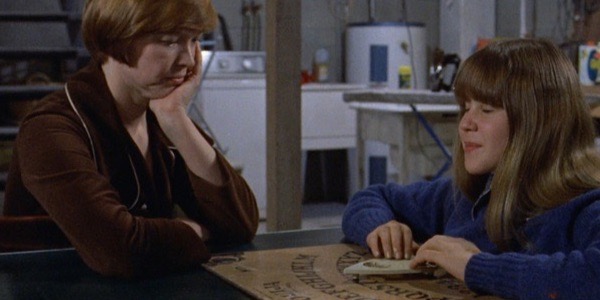
Having just finished filming her latest film with friend Burke Dennings (Jack MacGowran), actress Chris MacNeil (Ellen Burstyn) arrives home to her loving daughter Regan (Linda Blair). Regan has been waiting all day for her mother’s return with excitement to show her the latest toy she has been engaged with all afternoon – a Ouija Board. Showing her mother how it works, she talks of Capetian Howdy who still resides in the home and speaks to her through the use of the toy. Thinking nothing of it, Chris lovingly puts her daughter to bed.
After the Ouija board, however, innocent fun turns into a nightmare of epic proportions. Regan begins acting out both vocally and physically – each incident more horrific than the last. Desperate to find out what has caused the sudden change of behavior in her daughter, Chris consults a variety of doctors, only to find that science holds no answers. When the mysterious death of a close friend occurs in her home, Chris begins to believe that only religion can save her daughter, turning to Father Karas (Jason Miller) for an exorcism.
Creating a Masterpiece
When I think of what must be achieved to label a film a masterpiece, I think of every element from story to character to acting to lighting to set design. Everything needs to be executed flawlessly and with precision. Whatever the filmmakers and the storytellers have set out to say, must be clear. And above all, it must stand the test of time.
During and after watching The Exorcist, I had heard about how it is one of the greatest horror films of our time and the exceptional rare acknowledgement the Academy had bestowed upon it (98% of the time the Academy does not go for the horror genre). Yet, I truly understood the gravity of the acknowledgement when I finally sat down to watch it this month. Like my previous article regarding Saving Private Ryan, this was a film that had been on my list for years yet I had never seen it.
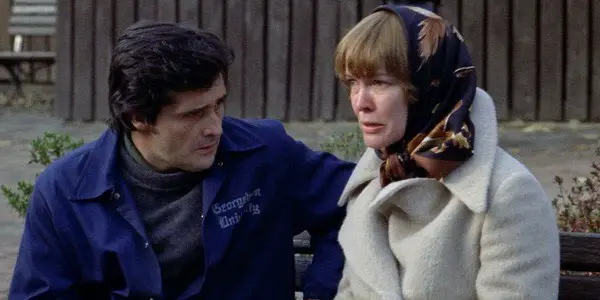
A collaboration of talent between director William Friedkin (nominated for Best Director) and writer William Peter Blatty (winner of Best Screenplay) was the perfect combination. With a brilliant and solid script written by Blatty, Friedkin had the perfect foundation to build this film off of. Everything was evenly paced, unlike many other horror films of the time (and many today) that were drawn out and lacking substance at various points. Every scene has substance, with no fillers required, and each scene provided Friedkin with a vast array of material to bring the story to life.
Choices in imagery and how Friedkin would bring them to life were one of the strongest elements of The Exorcist. While highly graphic at times (many theaters provided barf bags), the graphic imagery was used as little as possible and with tact and pose. It had a purpose, again not being used as a filler.
One of my favorite uses of imagery in The Exorcist is a credit to Friedkin and his editing crew in understanding how to best utilize the psychology of his audience. Creepy flashes of faces were used in-between the film, and at times to the side background of the screen. The larger faces were quick and always monstrous in the middle of the screen. You never knew when they would come, and by the time you realized you had seen it, they were gone. Unnerving, the anticipation of seeing them again and where they would come from heightens the intensity and demonic activity around the film.
Smaller images were typically on the right side of the screen, which has the ability to scare more individuals – as we read left to right, we too scan the screen left to right. This is utilized in many horror films throughout the ages, yet in this film it had the same unnerving effects as the larger images, yet you are never quite sure what you saw, when you saw and if there would be more. It is no surprise that the film editing team (Jordan Leondopoulos, Bud S. Smith, Evan Lottman and Norman Gay) were honored with an Oscar nomination for their excessive and precise editing throughout the film.
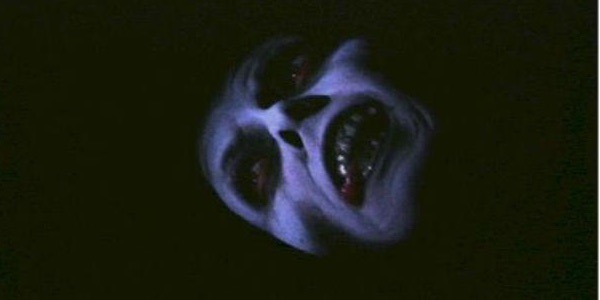
Cinematography by Owen Roizman (also nominated in his category) was as epic as anything. The beautifully, haunting and ominous lighting was utilized throughout The Exorcist, the darkness and low light taking over the once bright film more and more. There is one moment, when the power is out and Chris is walking through the house, and a light from the window forms a cross on her face – just before the lights flicker back on and there is a demonic face briefly on the hood of the stove. Even with light, there is a duel between good and evil.
But what is a film without a cast to bring everything to life? The Exorcist once again hits it out of the ball park, bringing in three nominations for its three leading stars. Ellen Burstyn delivers as the devastated mother, helpless to save her daughter. She exhibits a longingness and a loneliness that leaches out of the screen and into the audience, rendering them as powerless as her character is. Jason Miller brings turmoil and conflict to his character in both his speech and his mannerisms. He fully encompasses an individual at war with himself and his faith. Linda Blair as Regan is remarkable, not because she was a child when this film was made, but because she was simply incredible. Her transition from innocence to a demonic-fueled being is outstanding, believable, and at times horrific to watch.
Character Development
Horror movies around this time were less interested in creating believable and relatable characters, and more about the monsters that could be brought to life to terrify audiences. The Exorcist, however, broke free of this cliché, understanding that a deeper development in character could create an audience to become attached, thus causing a greater tension and suspense with the action and monsters that terrorized the characters.
Regan is not initially presented as a young child who is possessed, but instead as an innocent and sweet little girl. The relationship she shares with her mother is shown briefly in the beginning, but enough to know that their bond is deeply rooted, strong and well-nourished. The two are relatable and audiences can see themselves with their daughters and mothers and feel the love between them.
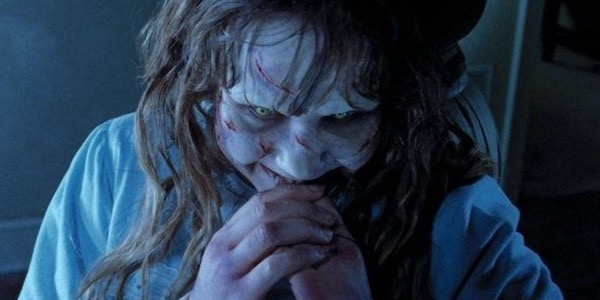
With this in the minds of viewers, it is heartbreaking to see Regan succumbing to the demon within her and gut-wrenching to watch her mother struggle helplessly to find a way to save her. To see pure innocence turned putrid, and the vile acts carried out weighs more heavily on the audience when they have become invested in the well-being of the characters.
Father Karas was another interesting development that would play strongly throughout the second half of the film. Being a priest and a psychiatrist, he is doubtful of a demon presence in Regan – that the devil himself could possess such a small child. He advises Chris to heed the advice of the various doctors she has spoken with, and that an exorcism will not help her daughter – that and the church is extremely reluctant to preform any exorcisms without undeniable proof.
As a priest, to believe in God as pure good, is to also believe there is a devil of pure evil. He is shaky on his belief, his faith wavering in the current state of the world as well as his own internal turmoil involving the death of his mother. To give a secondary character such depth not only helped elevate the second half of the film but helped this film stand out amongst horror films of the past and present.
When faced with the demon possessing Regan’s body, Karas must come to terms with his faith, finally deciding what he truly believes in. He is given a moment in the film where we clearly see this, the entire depth of his character culminating into a climatic and satisfying (and disturbing!) conclusion.
Shockingly Successful
After watching this film, what can horror films and aspiring horror filmmakers today still learn from The Exorcist? Shock is the ultimate weapon in horror. While there was not the same level of desensitization that currently exists, the film is still as shocking watching it for the first time in 2017.
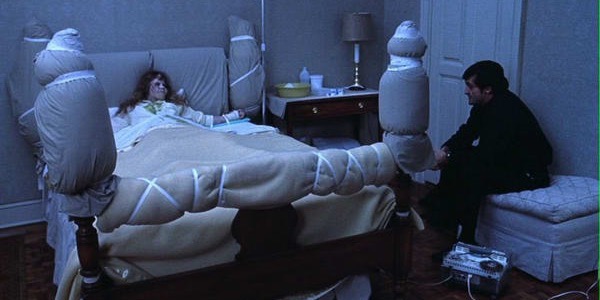
Shock of the crab-walk down the stairs, shock of the grotesque usage of a cross, shock of randomized terrifying faces laced within the film. With shock, viewers are left unhinged and on the edge of their seats, creating the perfect avenue for terror to find them.
This element and concept of shock that made The Exorcist so successful still rings true today, influencing the films of our time. Take Get Out (another potential Academy nominee) for example. Shock was one of the elements that made Get Out so successful. While its basic story can be seen in films past (Invasion of the Body Snatchers and Skeleton Key), the shock of the racial implications and the brutality of humanity elevated the film.
Silence of the Lambs (the only other horror film to receive a Best Picture nomination) brought the strong story, character development, as well as the shock. Every element of Hannibal Lector was shocking, his demeanor, his cool collected and calculated nature hunting its prey. The limited and expertly used gore and imagery to enhance the story and motivate its characters was also shocking elements that lasted throughout the entire length of the film.
The Blair Witch Project brought the shock and horror of a possible reality and truth, where Saw brought the shock of an unimaginable plot twist and imagery. With successful use of shock, a generic horror film can be elevated and brought to grander cinematic achievements. The Exorcist proved this to be true in the horror genre, leading future films to follow pursuit and find their own form of success.
Timeless Classic 40 Years Later
With box office sales, home video sales, conventions and streaming contracts behind them, standing the test of time is a final exam for a film. While there are classics, timeless masterpieces are harder to come by. A member of this elite group that boasts the likes of Titanic, The Godfather and Gone with the Wind, The Exorcist has passed with flying colors, still as shocking as its initial release and a constant inspiration for both film and television.
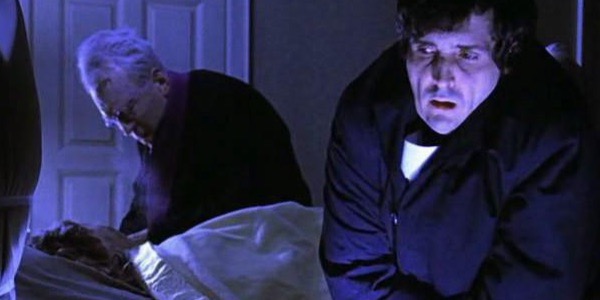
40 years after its release, references and modern takes can still be found – as recent as this past weekend’s The Simpsons episode Treehouse of Horror XXVIII (Maggie was unfortunately possessed by the demon Pazuzu), as well as last years hit TV series The Exorcist on FOX. In Halloween, when Laurie is walking home from school, the camera angle and setup closely matches and resembles Chris walking home from the final take on the film she had been working on.
Yet, while it is still a commonly referenced film today, what makes it still watchable and timeless 40 years later is the mindset when watching it. When my friends and I first watched The Texas Chainsaw Massacre, there was a mindset that we had to get into to appreciate the film. We needed to understand the technology and where film was currently at in the horror genre at the time of the film’s making. The same must be said for Halloween and Friday the 13th. To enjoy is to appreciate.
Yet, with The Exorcist, there was no mindset needed to enjoy and appreciate the film. It is as applicable to today’s audiences as it was when it first premiered. It is timeless.
Conclusion
“It’s a lovely day for an exorcism” – No, it’s a lovely day for a horror classic. For this Halloween, I highly recommend a viewing of The Exorcist. This timeless masterpiece, the first of its kind acknowledged by the Academy, is sure to please and terrify. With strong character development, grade A filmmaking, and modern day culture references keeping it fresh, this is sure to become a holiday tradition.
Happy Halloween!
Have you seen The Exorcist? Tell us your thoughts in the comments below!
Does content like this matter to you?
Become a Member and support film journalism. Unlock access to all of Film Inquiry`s great articles. Join a community of like-minded readers who are passionate about cinema - get access to our private members Network, give back to independent filmmakers, and more.













